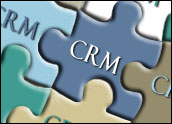
The latest enhancements to Landslide’s sales application sparked the interest of Chris Bucholtz, who blogged about it at InsideCRM.
“Here’s what Landslide provides in the new release: a single-screen interface that walks its users through the standard tasks that CRM fulfills — gathering data on customers and leads — and then beyond that into a set of processes that guide sales reps all the way through closing the sale,” he writes. “While the solution comes with a pre-set group of processes, it’s also completely customizable, so it can fit your organization’s way of working and you don’t have to impose changes on your staff to fit the software.”
The integration of InsideView’s SalesView product into Landslide is Bucholtz’ favorite feature. “It’s neat for two reasons: First of all, it brings a wealth of new information to sales people using Landslide, and it indicates how InsideView’s information aggregation and evaluation technology is going to become a component of a lot of tools in areas where knowledge of the customer is critical.”
Landslide will keep focusing on building out its core offering of the sale process area, said Saman Haqqi, Landslide’s vice president of marketing, who no doubt is pleased by Bucholtz’ analysis.
“We have a lot of ideas for proving the process even further so it can continue to deliver insight into what is working and what is not,” Haqqi told CRM Buyer.
Siemens’ UC Strategy
Last week, Siemens andThe Gores Group announced a joint venture to expand Siemens’ footprint in the unified communications space. Bloggers interested in this slice of the customer communications market definitely took note.
The direction of Siemens’ unified communications strategy “has been surprisingly consistent,” wrote Jim Burton. “Siemens worked with Microsoft on solutions we now call UC. They were ahead of the market but it looks like they now have an opportunity to become a market leader in the UC space.”
Indeed, he wonders why it has not happened already.
“I have always felt — Siemens has a great UC story but nobody is buying it — why? I have already mentioned they were early to market and, they have a great marketing executive in Mark Straton — so why haven’t they been more successful?”
One explanation, Burton suggests, is that Siemens is too large to easily evolve with the changing market and technology. “To become a market leader they need to change the way enterprise customers look at communications,” he concluded.
Gores has a track record of pushing companies to profit, notes Marty Parker of UniComm Consulting. “As part of the Gores joint venture, choices can and will be made. Will SEN continue to focus on hosted solutions, as they have been doing with their partnership with BT? Or, will SEN drive to build on their leadership position in Unified Communications with the OpenScape Software suite, which leverages the powerhouse relationships with Microsoft and IBM?
“Or, will SEN join the rush to the Small & Mid-sized Business (SMB) markets? Or, perhaps SEN can combine UC and SMB with Enterasys to create UC appliances ready for any network (avoiding big Cisco network upgrades)? Or will SEN continue to claw for share in the slow-growth large enterprise IP PBX market, where they are in the cluster of firms that are losing share to Cisco? Likely, we will see SEN pick one, or at most two, of these.”
Among those who are not so approving of Siemens’ choice is blogger Alex Lewis.
“As expected, they are using [Gores’] turnaround of Enterasys as an example,” he wrote. “The turnaround was from dead to irrelevant. I’d hardly boast about that as a success story. Surely they have something better? This is the most press Enterasys has had since the late 90s.”
From the Vendor’s Perspective
For some insights into the way the service providers think about implementation, check out “Advantage SaaS: Faster Go-live!” by John Radko, chief technology strategist at GXS.
He points to a SaaS provider of project management and collaboration, Daptiv, that has recently released numbers on the time span from starting a subscription to live usage, with the average less than 30 days, even for a rollout larger than 1,000 users.
“The fact that Daptiv has collected the metrics for its project interested me, because I think it showcases a certain mindset found in service providers — the drive to get clients using the system,” he says.
“In a traditional software model, the vendor of the software makes the bulk of their revenue from a license — which is usually purchased before any usage occurs… Professional services often has an even stranger model — in that the flow of money actually decreases or stops when the project is over,” continues Radko.
A provider selling SaaS-like services only makes money as clients use the system.
“We have the ultimate incentive to get clients up and running quickly, that is when we get paid. Even better, unlike a model where the bulk of the expense occurs before any return, using services allows you to align expense and return so that large projects are more ‘even,’ rather than front-loaded. If you plan to have a community of 100 business partners, for instance, you pay for 100 only when the 100th partner joins and starts participating — rather than the traditional ‘build it and they will come’ approach,” he concludes.






















































